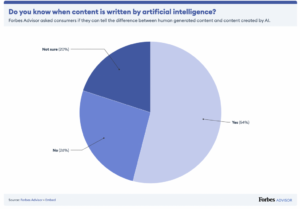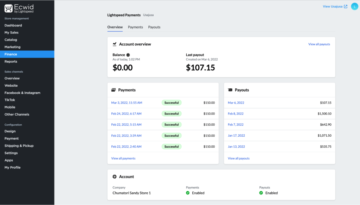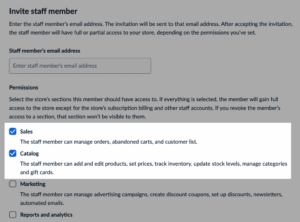People don’t buy products, they buy experiences. This quote is fundamental in commerce. Whether it comes to clothing or online shopping, experience has become a competitive product businesses offer.
Customer experience is a rather broad topic, encompassing various aspects. Therefore, providing a great customer experience is a multidimensional effort. One way to get closer to it is by ensuring your customers can swiftly and effortlessly resolve their issues.
Great customer support means a lot of things: fast responses, proactive agents, discounts, and more. It also entails allowing customers to solve their problems on their own, anytime they want.
Scaling Customer Service
The problem with scaling customer service is that it usually increases spending for a business.
Training, tools, and tech must be spot-on to keep up with the demand. You want to make sure every customer’s voice is heard and every issue is quickly resolved, but at the same time, you don’t want to hire an army of support agents.
Cost-effective scaling is a delicate dance between quality and not going broke. A good way to start with it is to optimize existing processes and reasonably invest in automation, making sure the human touch isn’t lost in the shuffle.
One way to scale your support is to implement self-service.
By providing customers with the tools and resources they need to find answers to their questions independently, businesses can improve their support without investing much into expanding the team’s headcount.
In other words, you help your customers help themselves.
Self-service options, such as knowledge bases, FAQs, chatbots, and interactive tutorials, offer 24/7 support so customers can access information at their convenience and avoid all the fuss connected to interactions with a support team.
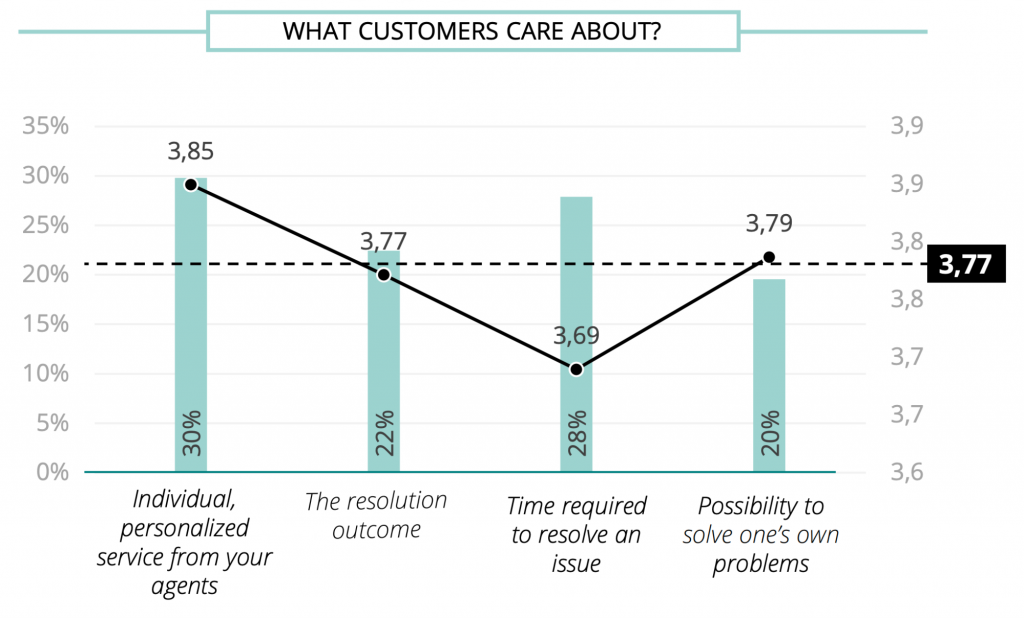
Consumers want to be able to solve their problems on their own (Source: Deloitte’s Customer Service Excellence Report)
Self-service is not just a tool or a set of tools. It should be a part of your customer service strategy as it aligns with the customer-centricity of business.
What Is Self-Service?
Self-service is about empowering customers to find solutions to their problems at their convenience.
Self-service provides customers access to various tools and resources, such as knowledge bases, FAQs, chatbots, and instructional guides. This approach enables customers to find solutions and answers to their queries without needing direct assistance from support agents.
The Advantages of Self-Service
Self-service offers many benefits for both customers and businesses.
For customers, it means convenience, as they can find answers and resolve issues quickly and independently, often 24/7. It also empowers them with control over their interactions and reduces the frustration of waiting for assistance.
On the business side, self-service enhances operational efficiency, reduces support costs, and frees up human resources to focus on more complex tasks. It also fosters data collection and insights, helping companies better understand customer needs.
Ultimately, self-service is a win-win, improving customer satisfaction while optimizing business operations.
Let’s have a closer look at the benefits of self-service.
Cost Savings
As mentioned earlier, self-service options are cost-effective. They reduce the volume of incoming support inquiries and the need for a large customer support team, resulting in significant cost savings over time.
Improved Availability
Unlike support agents, customer self-service is there to help day and night.
Self-service options are available 24/7, allowing customers to access information and get help at any time that suits them. This convenience is especially valuable for global products or services that operate in different time zones or with busy schedules.
Faster Problem Resolution
Since self-service empowers customers to resolve issues on their own, often faster than waiting for assistance from a support agent, it leads to quicker problem resolution and increased customer satisfaction.
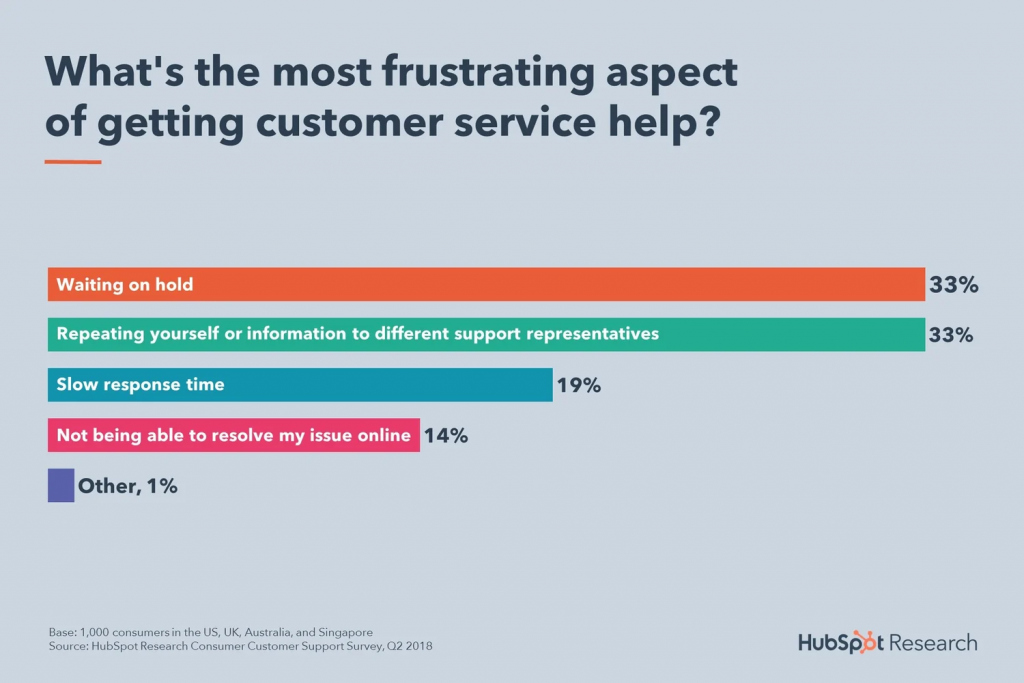
Waiting for an answer and not being able to resolve an issue are some of the most frustrating things for consumers (Source: HubSpot)
Reduced Customer Effort
Customer effort is the level of difficulty or the amount of effort a customer needs to put in to achieve a desired outcome when, for example, seeking help.
Self-service reduces the effort of finding information and getting help. Customers can easily navigate knowledge bases and FAQs or use chatbots, eliminating various obstacles.
Scalability
Self-service tools can easily scale to accommodate a growing customer base. As a business expands, self-service remains a consistent and efficient support option, unlike hiring and training additional support staff.
Data-Driven Insights
Whether it comes to a knowledge base software or a chatbot tool, such tools generate valuable data about your customers: their behavior, preferences, needs, the most common problems, and more. This data can later influence business and product improvements.
Consistency
Automated self-service ensures consistent information. Whether it comes to a knowledge base or a chatbot, knowledge management encourages agents to unify information.
Unlike human agents whose responses may differ, self-service organizes information and serves as the only source of information.
Reduced Support Load
By handling repetitive queries, self-service reduces the workload of support agents. This allows them to focus on more complex issues, improving their overall productivity and job satisfaction.
24/7 Availability
The tools are available around-the-clock, ensuring customers can access assistance at any time, including outside of regular business hours.
Enhanced Customer Experience
A well-implemented self-service strategy enhances the overall customer experience. It aligns with the preferences of modern customers who value convenience and autonomy.

Customer satisfaction greatly influences the chance of a customer recommending a brand or buying from it again (Source: Gladly)
Examples of Self-Service Tools
There are a few ways that you can quickly make your customers’ lives trouble-free.
Knowledge Base
A knowledge base is a repository of information that serves as a reference tool for individuals seeking answers to specific questions or solutions. It usually contains articles, guides, FAQs, and other documents designed to provide insights into a particular subject, product, or service.
Knowledge bases are designed for easy navigation and for users to access the information they need quickly. Whether troubleshooting problems, or learning how to use a product, or understanding a complex concept, a knowledge base has it all.
Organizations using these tools can enable customers, employees, and support teams to access information on their own, anytime they want, reducing the need for one-on-one assistance.
Imagine never having to explain the same thing over and over again to new employees. With a knowledge base, all information is neatly organized, from company policies to best practices and onboarding materials. Company announcements, updates, and reports are now kept in one place, available to all employees at their convenience.
When it comes to customers, they don’t have to wait on hold forever or send a gazillion emails to get answers. Quick fixes, FAQs, or in-depth guides can be quickly found in a knowledge base. Plus, it’s open 24/7, so they can solve their problems immediately and at any time, even on Saturday at 2 AM.

An example of a knowledge base by Nike
Interactive Tutorials and Guides
Interactive tutorials and guides walk you through everything you need to know, step by step. They are fantastic tools that take a customer, or a user, from I have no idea to I got this in no time.
They use visuals, animations, and clear instructions to help users find their way around something. Whether these are the first steps in a photo-editing software or a SaaS tool, interactive tutorials are the best way to teach users how to use a tool.
It is mostly because they offer an engaging way to assist customers in solving problems or mastering new skills. Unlike written instructions, interactive tutorials combine text with visuals, animations, and sometimes even quizzes to create a more immersive learning experience. This multimedia approach uses various learning styles, letting users absorb information effectively.
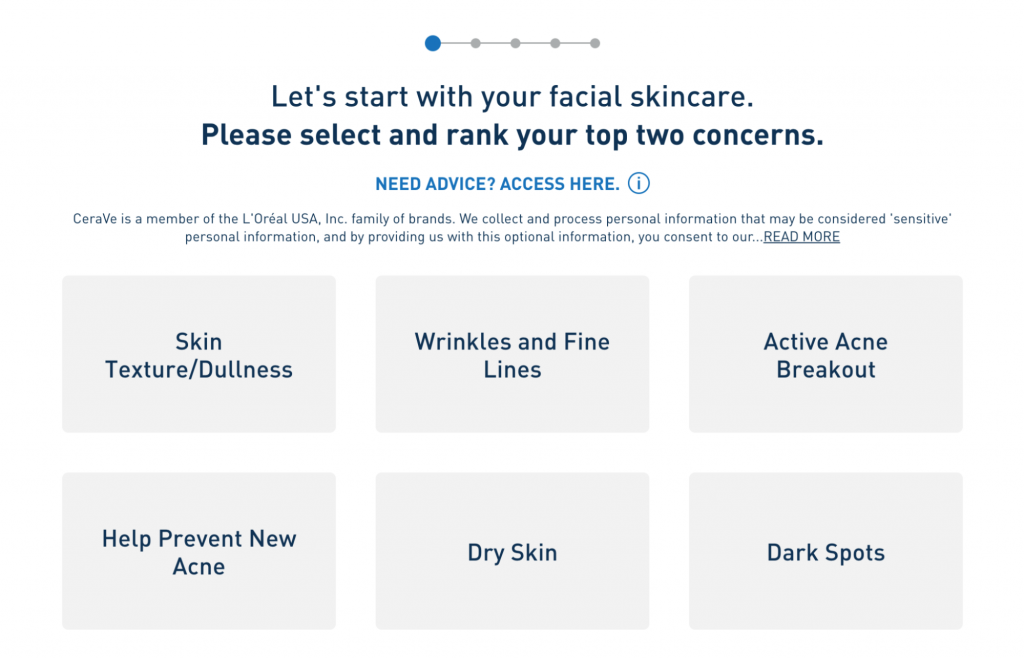
CeraVe offers customers a quiz that serves as an interactive guide to their products
Chatbots
Chatbots are another tool worth considering when investing in self-service, whether it’s answering FAQs, providing product information, or guiding users through troubleshooting steps.
Chatbots are computer programs designed to simulate human conversation and interaction with users. They use artificial intelligence and natural language processing to understand and respond to text or voice inputs in a conversational manner.
They can be integrated into websites, messaging apps, or other digital platforms, providing an efficient way for customers to get answers to their questions, resolve issues, or access information.
Chatbots can handle a wide range of tasks, from answering frequently asked questions to assisting with product recommendations and even facilitating transactions.
Chatbots use artificial intelligence to respond to customers seeking assistance. Chatbots chat in real-time, which is convenient for customers as they can get help whenever they need it.
Chatbots follow predefined scripts and algorithms, so they are consistent in their responses, and they keep learning from each interaction. This makes them even more helpful over time.

A chatbot on the Warber Parker website
What If Self-Service Is Not Enough?
Of course, self-service will not be able to solve more complicated customer problems. At least not yet.
With this in mind, customers need to have an easy way of connecting with human agents. This brings us to offering a smooth transition between self-service and human support.
The sweet spot here is about two things: giving customers the autonomy to find answers on their own and offering a helping hand when they need it.
Offering readily accessible channels such as live chat with an agent, phone support, or email ensures that customers don’t get stuck in frustrating dead ends. Instead, they can seamlessly transition to human assistance, where trained experts can provide personalized solutions and navigate the complexities of their unique situations.
Everything in business these days is customer-centric, so an easy switch to human support recognizes consumers’ preferences, ultimately leading to higher customer satisfaction.
There are a couple of aspects to keep in mind on this topic:
Clear Pathways
First of all, self-service options should be easily accessible and well-promoted to customers. This includes having a user-friendly website or app interface, visible self-service links, and clear instructions on how to utilize self-help resources.
Progressive Disclosure
Self-service tools should progressively disclose more personalized assistance options. Start with basic FAQs and knowledge bases, and then offer escalation paths to live chat, phone support, or email.
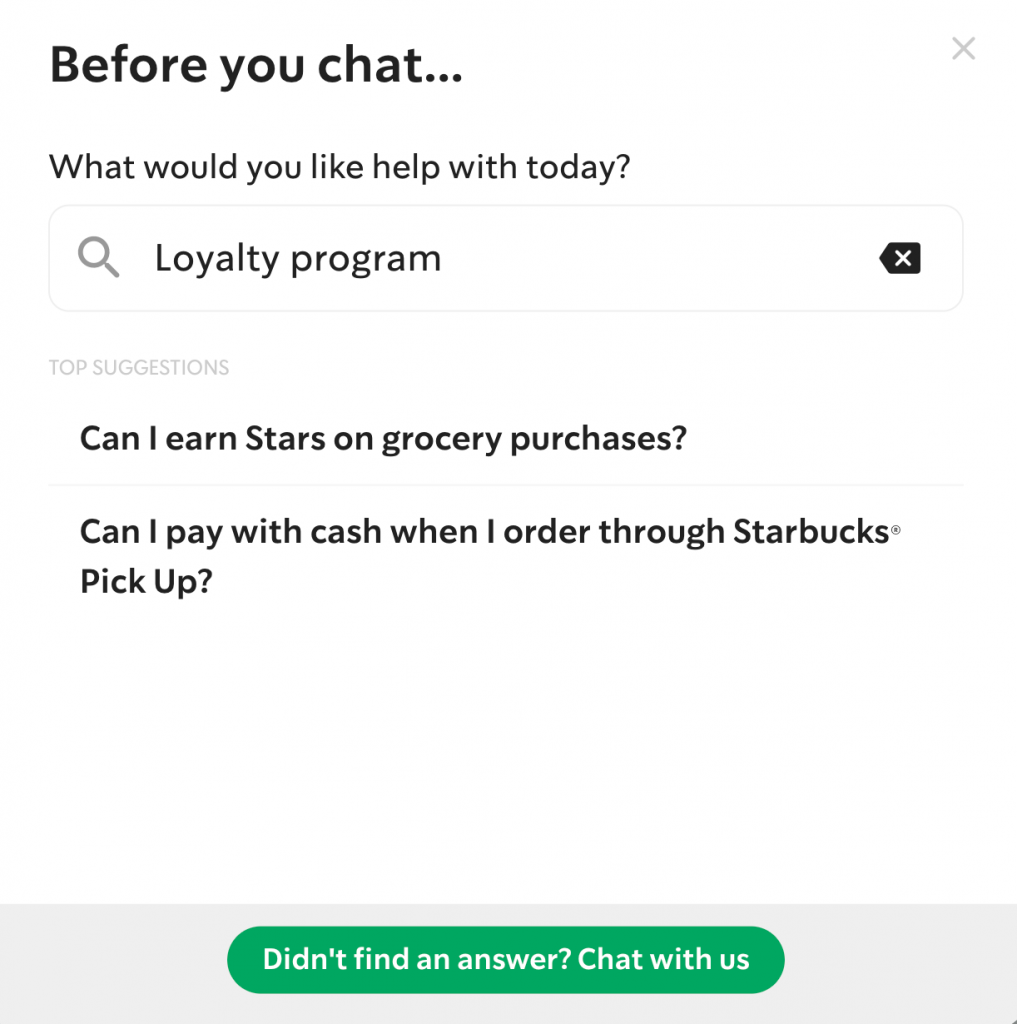
Starbucks offers customers to check out their FAQs before connecting with a support agent
Live Chat Integration
Some live chat tools can seamlessly transfer conversations from automated chatbots to human agents when needed. Customers should be able to request live assistance at any point during their interaction with a chatbot.
User Data
It’s good to collect user data such as history of interactions, purchases, and other bits. Making this data available to human agents when transitioning from self-service allows agents to understand the context of the customer’s inquiry and provide more personalized support.
Omnichannel Support
Use tools that enable customers to switch between self-service and various support channels without losing their data and context. This ensures that customers don’t have to repeat information when they switch from self-service to human support.
Feedback Loop
Collect customer feedback about their self-service experience and the transition to human support. Use this feedback to continuously improve the process and identify pain points.
Monitoring and Analytics
Use analytics to track customer journeys and identify patterns where customers frequently transition from self-service to human support. This data can inform improvements in self-service content and usability.
Over to You
Customer experience is a product.
Crafting exceptional customer experiences is a big effort. One part of this effort is ensuring that customers can swiftly and effortlessly resolve their issues.
A great experience in customer support means not only rapid responses, proactive agents, or discounts but also empowering customers to find solutions at their convenience. However, the challenge is in scaling customer support without inflating expenses. Finding the right balance between quality and cost-effectiveness is a delicate dance. But this is where self-service emerges as a compelling solution.
By providing customers with tools to solve problems on their own, businesses can enhance their support without an expansion of their support team. In essence, self-service fosters customer self-empowerment, offering access to knowledge bases, FAQs, chatbots, and interactive tutorials that provide 24/7 assistance.
It’s more than a tool—it should be an integral part of your customer service strategy designed to enhance customer satisfaction and streamline business operations.
- SEO Powered Content & PR Distribution. Get Amplified Today.
- PlatoData.Network Vertical Generative Ai. Empower Yourself. Access Here.
- PlatoAiStream. Web3 Intelligence. Knowledge Amplified. Access Here.
- PlatoESG. Automotive / EVs, Carbon, CleanTech, Energy, Environment, Solar, Waste Management. Access Here.
- PlatoHealth. Biotech and Clinical Trials Intelligence. Access Here.
- ChartPrime. Elevate your Trading Game with ChartPrime. Access Here.
- BlockOffsets. Modernizing Environmental Offset Ownership. Access Here.
- Source: https://www.ecwid.com/blog/self-service-customer-support.html
- :has
- :not
- :where
- 361
- Able
- About
- access
- accessible
- accommodate
- Achieve
- Additional
- advantages
- affordable
- again
- Agent
- agents
- algorithms
- Aligns
- All
- Allowing
- allows
- also
- am
- amount
- an
- analytics
- animations
- Announcements
- Another
- answer
- answers
- app
- approach
- apps
- ARE
- Army
- around
- articles
- artificial
- artificial intelligence
- aspects
- assist
- Assistance
- assisting
- Automated
- Automation
- available
- avoid
- Balance
- base
- basic
- because
- become
- before
- being
- benefits
- BEST
- best practices
- Better
- between
- Big
- both
- brand
- Brings
- broad
- Broke
- business
- business operations
- businesses
- busy
- but
- buy
- Buying
- CAN
- Can Get
- challenge
- Chance
- channels
- chatbot
- chatbots
- check
- clear
- closer
- Clothing
- collect
- collection
- combine
- comes
- Commerce
- Common
- Companies
- company
- compelling
- competitive
- complex
- complexities
- complicated
- computer
- concept
- connected
- Connecting
- considering
- consistent
- Consumers
- contains
- content
- context
- continuously
- control
- convenience
- Convenient
- Conversation
- conversational
- conversations
- Cost
- cost savings
- Costs
- Couple
- course
- create
- customer
- customer base
- customer experience
- Customer satisfaction
- Customer Service
- Customer Support
- Customers
- dance
- data
- day
- Days
- dead
- deloitte
- Demand
- designed
- desired
- differ
- different
- Difficulty
- digital
- digital platforms
- direct
- Disclose
- discounts
- documents
- Dont
- during
- each
- Earlier
- easily
- easy
- effectively
- efficiency
- efficient
- effort
- effortlessly
- eliminating
- emails
- emerges
- employees
- empowering
- empowers
- enable
- enables
- encompassing
- encourages
- ends
- engaging
- enhance
- Enhances
- enough
- ensures
- ensuring
- escalation
- especially
- essence
- Even
- Every
- everything
- example
- Excellence
- exceptional
- existing
- expanding
- expands
- expansion
- expenses
- experience
- Experiences
- experts
- Explain
- facilitating
- fantastic
- FAST
- faster
- feedback
- few
- Find
- finding
- First
- first steps
- Focus
- follow
- forever
- fosters
- found
- frequently
- from
- frustrating
- frustration
- fundamental
- generate
- get
- getting
- Giving
- Global
- going
- good
- got
- great
- greatly
- Growing
- guide
- Guides
- hand
- handle
- Handling
- Have
- having
- headcount
- heard
- help
- helpful
- helping
- here
- higher
- hire
- Hiring
- history
- hold
- HOURS
- How
- However
- HTML
- HTTPS
- HubSpot
- human
- Human Resources
- identify
- immediately
- immersive
- immersive learning
- implement
- improve
- improvements
- improving
- includes
- Including
- Incoming
- increased
- Increases
- independently
- individuals
- inflating
- influence
- inform
- information
- inputs
- Inquiries
- inquiry
- insights
- instead
- instructional
- instructions
- integral
- integrated
- Intelligence
- interaction
- interactions
- interactive
- Interface
- into
- Invest
- investing
- issue
- issues
- IT
- Job
- Journeys
- just
- Keep
- kept
- Know
- knowledge
- Knowledge Management
- language
- large
- later
- leading
- Leads
- learning
- least
- letting
- Level
- links
- live
- Lives
- Look
- losing
- lost
- Lot
- make
- MAKES
- Making
- management
- manner
- many
- Mastering
- materials
- max-width
- May..
- means
- mentioned
- messaging
- messaging apps
- mind
- Modern
- more
- most
- mostly
- much
- Multimedia
- must
- Natural
- Natural Language
- Natural Language Processing
- Navigate
- Navigation
- Need
- needed
- needing
- needs
- never
- New
- night
- now
- obstacles
- offer
- offering
- Offers
- often
- Onboarding
- ONE
- online
- online shopping
- only
- open
- operate
- operational
- Operations
- Optimize
- optimizing
- Option
- Options
- Organized
- organizes
- Other
- out
- Outcome
- outside
- over
- overall
- own
- Pain
- Pain points
- part
- particular
- patterns
- Personalized
- phone
- Place
- Platforms
- plato
- Plato Data Intelligence
- PlatoData
- plus
- Point
- points
- policies
- practices
- preferences
- Proactive
- Problem
- problems
- process
- processes
- processing
- Product
- Product information
- productivity
- Products
- Programs
- progressively
- provide
- provides
- providing
- purchases
- put
- quality
- queries
- Questions
- Quick
- quicker
- quickly
- Quiz
- quote
- range
- rapid
- rather
- readily
- recognizes
- recommendations
- recommending
- reduce
- reduces
- reducing
- regular
- remains
- repeat
- repetitive
- Reports
- repository
- request
- Resolution
- resolved
- Resources
- Respond
- responses
- resulting
- right
- SaaS
- same
- satisfaction
- saturday
- Savings
- Scale
- scaling
- scripts
- seamlessly
- seeking
- Self-service
- send
- serves
- service
- Services
- set
- Shopping
- should
- shuffle
- side
- significant
- situations
- skills
- smooth
- Software
- solution
- Solutions
- SOLVE
- Solving
- some
- something
- sometimes
- Source
- specific
- Spending
- Spot
- Staff
- start
- Step
- Steps
- Strategy
- streamline
- styles
- subject
- such
- support
- sure
- sweet
- swiftly
- Switch
- Take
- tasks
- team
- teams
- tech
- text
- than
- that
- their
- Them
- themselves
- then
- There.
- therefore
- These
- they
- thing
- things
- this
- Through
- time
- to
- tool
- tools
- topic
- touch
- track
- trained
- Training
- Transactions
- transfer
- transition
- transitioning
- tutorials
- two
- Ultimately
- understand
- understanding
- unique
- unlike
- Updates
- usability
- use
- User
- users
- uses
- using
- usually
- utilize
- Valuable
- value
- various
- visible
- visuals
- Voice
- volume
- wait
- Waiting
- walk
- want
- Way..
- ways
- Website
- websites
- when
- whenever
- whether
- which
- while
- WHO
- whose
- wide
- Wide range
- will
- with
- without
- words
- worth
- written
- yet
- you
- Your
- zephyrnet
- zones



